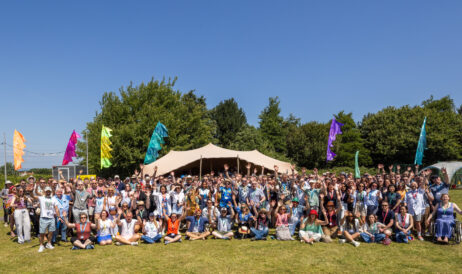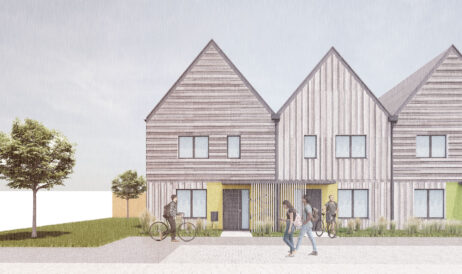Juan is a member of the Stride Treglown BIM and Visualisation groups. He aspires to build bridges between the two through research and innovation; using digital software as a concept design tool and immersive technologies during the planning process.


Nobody handwrites an email before typing it. So why are we expected to do that with our drawings?
Using digital software in the early stages of a project is a contentious issue for many architects who are reluctant to embrace new technologies, but I am convinced in the near future it’ll become the standard.
I recently tested this approach for a proposed new Hampton by Hilton hotel in Trafford, Manchester and I am convinced that the early use of digital software helped us overcome this project’s many challenges.
The client brief seemed simple enough; create an ‘iconic’ tall building on a major road intersection near Manchester United’s football stadium. However, the business of architecture is rarely that simple and there are often contradictory aspirations to meet. This project was no exception.
Our site swings between a leafy, residential side street characterized by semi-detached housing and Chester Road, one of the strategic routes into Manchester City Centre. We knew that residents wouldn’t necessarily welcome rubbing shoulders with a 20-storey neighbour.
The brand and site are an odd couple too. The hotel market required this hotel offer to be a premium budget brand (providing bed & breakfast and bar/lounge only) of which there are arguably no 20-storey, slender examples anywhere in England. Designing a high-quality, landmark building within the constraints of a budget hotel brand was always going to be a challenge.
We developed a fully digital concept design from inception, to navigate these challenges and clearly communicate the merits of the project.
Developing a conceptual design using REVIT Massing Studies allowed us to work with digital 3D models, managing the right amount of information accurately and producing multidimensional visuals simultaneously. This new approach allowed us to focus on design by reducing the amount of time wasted producing abstract lineal drawings.
Architects don’t draw lines anymore, we place objects in space.
I firmly believe that the most efficient way to speed up the planning process is by improving the communication between its key stakeholders. New digital technologies can help. Videos or immersive visuals allow people to understand our ideas without the struggle of potentially misleading visuals: plans, sections and elevations.
I daresay that without the digital design tools and processes that Stride Treglown utilised it would have been virtually impossible to engage with the Local Authority to gain officer support for this new hotel. This positive experience encourages us to fully embrace this vision and try to persuade colleagues and collaborators to follow suit.
Juan will be presenting his ideas at Digital Construction Week on 16th October. Catch his seminar ‘Immersive Planning – Envisaging a new town planning process’ or get in touch to find out more.
If you’d like to immerse yourself further in our scheme for Hampton by Hilton Trafford, follow the link for more ‘fly-throughs and walk-throughs’: https://vimeo.com/showcase/6281910






